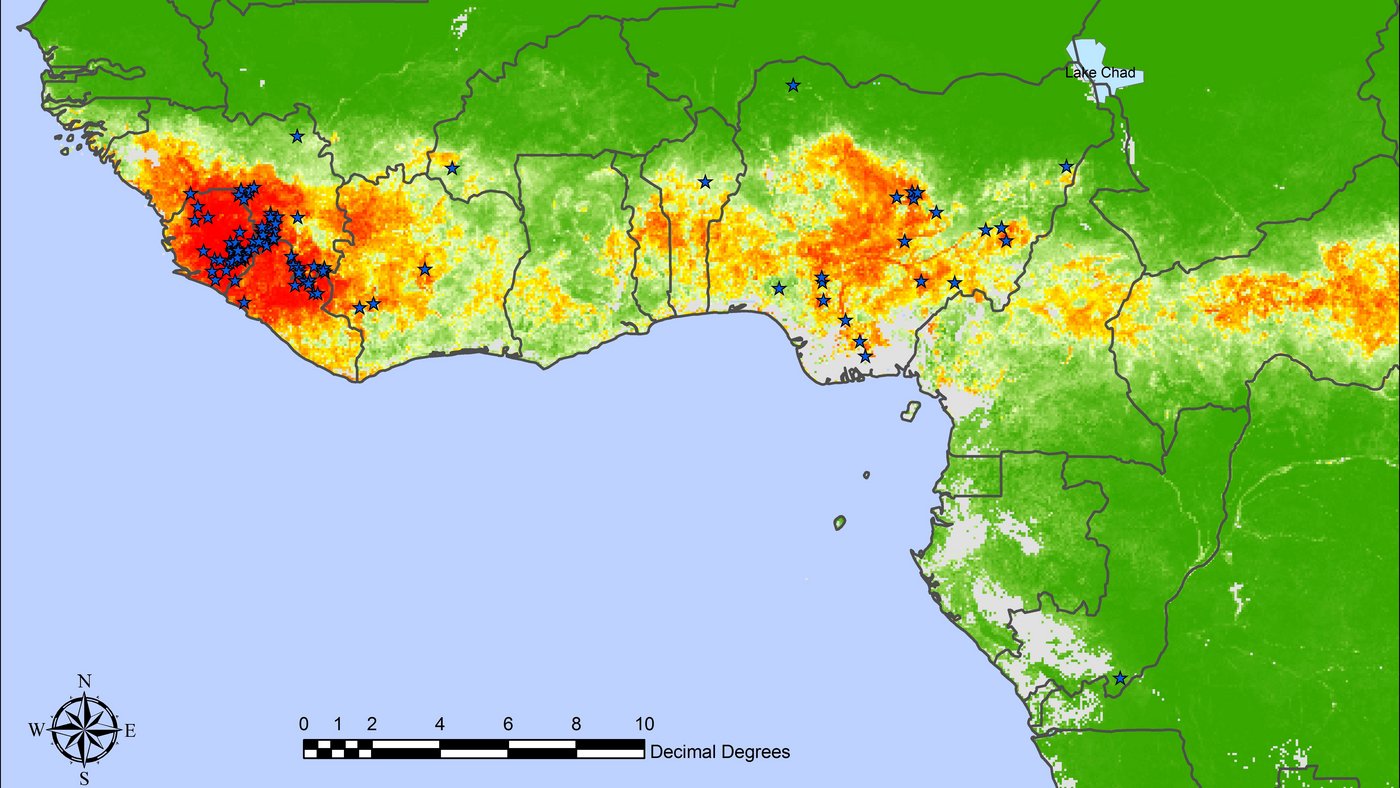Research Projects
Overview
Lassa fever is a viral hemorrhagic fever caused by an arenavirus discovered in 1969 in Nigeria. The disease is endemic in Guinea, Sierra Leone, Liberia, Nigeria, southern Mali, and northern Cote d’Ivoire (Figure 1). In the last years, some cases appeared in Togo and the Republic of Benin. The disease would affect 900,000 persons per year, leading to 18,000 deaths in West Africa. The symptoms can range from mild flu-like to fulminant haemorrhagic fever, including, fever, headache, thoracic or lumbar pain, myalgia, nausea and vomiting, cough, pharyngia, diarrhea, oedema and bleeding.
The Natal multimammate mouse, Mastomys natalensis has been the main known reservoir of Lassa virus until recent identification of other reservoirs, like Hylomyscus pamfi,Mastomys erythroleucus and Mus baoulei. It is suggested that humans become infected by eating food or touching objects contaminated with infected rodent urine, by hunting, trapping, butchering or eating rodents, and possibly by inhaling virus-laden particles. The rodent-to-human transmission is estimated to occur in 80% of the cases whereas a human-to-human transmission is estimated to occur in 20% of the cases in both the community and health facilities.
As long as there is no vaccine available, the prevention of rodent-to-human transmission is therefore an important strategy to reduce the incidence of Lassa infection in humans. Control of the Mastomys populations should limit this transmission. This management must firstly be based on preventive measures including sanitary (waste management, hermetic storage of foodstuffs) and architectural measures (filling holes, galleries) and can be supplemented by direct control either by trapping, or by chemical control. Among the countries where Lassa is endemic, Guinea was chosen to conduct ecological studies on LASV since 20 years. More specifically, the Faranah area in Upper Guinea where a large proportion of human and murine populations showed traces of LASV infection (30-40% of IgG prevalence in humans and 27% in rodents) was chosen for a rodent control experiment.










